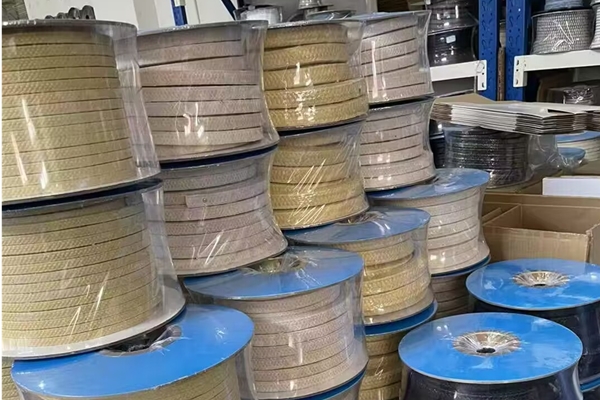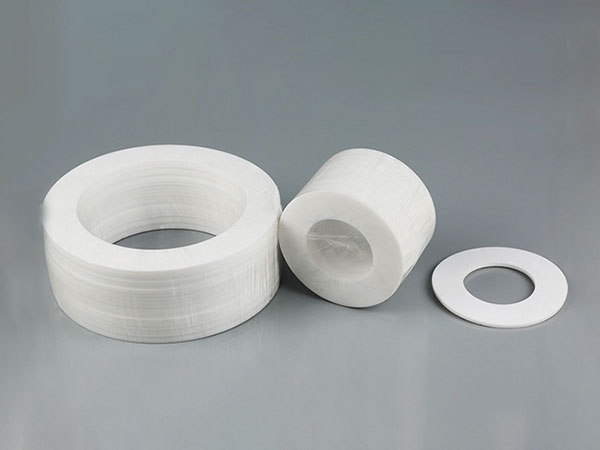Expanded polytetrafluoroethylene (expanded PTFE) sheets, commonly known as expanded Teflon sheets, are widely used in industries due to their unique microporous structure and exceptional properties like chemical resistance and insulation. However, ensuring their quality during production requires meticulous control over raw materials, manufacturing processes, environmental conditions, and testing standards. Here’s a breakdown of the key factors and steps involved in producing high-quality expanded PTFE sheets, explained in a way accessible yet grounded in science.
1. Raw Material Control
PTFE Resin Quality
The foundation of expanded PTFE starts with polytetrafluoroethylene (PTFE) resin. The resin must be of high purity with evenly distributed particle sizes to achieve a consistent and effective expansion process. Impurities or low-molecular-weight components can disrupt the expansion, leading to defects. For every batch, manufacturers test the resin’s melt index (a measure of how easily it flows when melted), thermal stability (its ability to withstand heat), and impurity levels.
Additives (If Used): Sometimes, lubricants or modifiers are added to enhance processing or properties. These must be precisely measured and fully compatible with PTFE to prevent residues that could weaken the material’s structure.
2. Manufacturing Process Control
Performing Stage
Before expansion, the PTFE resin is pressed into a solid preform. The pressure and temperature during this step must be carefully controlled to ensure uniform density. Uneven density can lead to cracks or distortions during expansion.
Expansion Process
This is where the magic happens—PTFE transforms into its expanded, porous form.
Temperature and Timing: The expansion oven’s heating rate, peak temperature, and holding time must be precisely managed. This ensures the PTFE expands evenly, forming a stable network of tiny pores.
Stretching Speed: The material is stretched to create its microporous structure. The speed of stretching must sync with the temperature—too fast, and the pores might tear; too slow, and the pore sizes become inconsistent.
Sintering Stage
After expansion, the material is sintered (heated to bond the structure). The sintering temperature and duration are critical to lock in the expanded structure, relieve internal stresses, and prevent shrinkage or warping later.
3. Production Environment Control
Cleanliness
The production area must be dust-free. Even tiny particles can stick to the material’s surface or clog its pores, compromising its sealing or insulation abilities.
Temperature and Humidity
Stable environmental conditions are a must. If the air is too humid, the PTFE resin might absorb moisture; if too dry, it could become brittle. Either way, this affects the expansion process, so temperature and humidity are kept consistent.
4. Equipment and Mold Management
Equipment Calibration
Key tools like the expansion oven, press, and stretching machine need regular calibration. This ensures that temperature, pressure, and speed stay within tight tolerances for reliable results.
Mold Maintenance
The molds used to shape the PTFE must be smooth and free of scratches. Any imperfections can cause uneven thickness or surface flaws in the final product.
5. Quality Testing and Monitoring
In-Process Checks
Thickness and Uniformity: During production, the sheet’s thickness and density are measured in real time to ensure consistency.
Pore Size and Porosity: Tools like microscopes or mercury intrusion tests check the microporous structure, confirming that pore sizes and connectivity meet design specs.
Final Product Testing
Physical Properties: Tests for tensile strength (how much it can stretch before breaking), compression recovery (its ability to bounce back), and tear strength assess its mechanical durability.
Functional Properties: The sheet is tested for air tightness, chemical resistance, and insulation to ensure it performs as intended.
Batch Sampling
A portion of each batch undergoes destructive tests, like high-temperature aging, to verify long-term stability.
6. Personnel Training and Standardized Operations
Standard Procedures
Detailed guidelines are followed for every step to minimize human error and keep production consistent.
Skill Development
Workers are regularly trained to understand the process and spot issues—like subtle changes in temperature or equipment behavior—early on.
7. Handling Defects and Continuous Improvement
Data Tracking
Every batch’s raw materials, process settings, and test results are logged. This creates a traceable record for troubleshooting.
Root Cause Analysis
If defects arise, advanced tools like scanning electron microscopes examine the material (e.g., fracture surfaces) to pinpoint the cause, such as a process flaw or raw material issue.
Summary
Controlling the quality of expanded PTFE sheets is a full-process effort. It starts with choosing top-grade raw materials, fine-tuning production steps, maintaining a clean and stable environment, and keeping equipment in top shape. Multiple layers of testing—during and after production—ensure the sheets have a consistent microporous structure, strong physical properties, and dependable performance. Beyond that, a robust quality management system and a commitment to continuous improvement are the keys to long-term reliability. This meticulous approach is what makes expanded PTFE such a versatile and trusted material in applications ranging from gaskets to medical devices.




